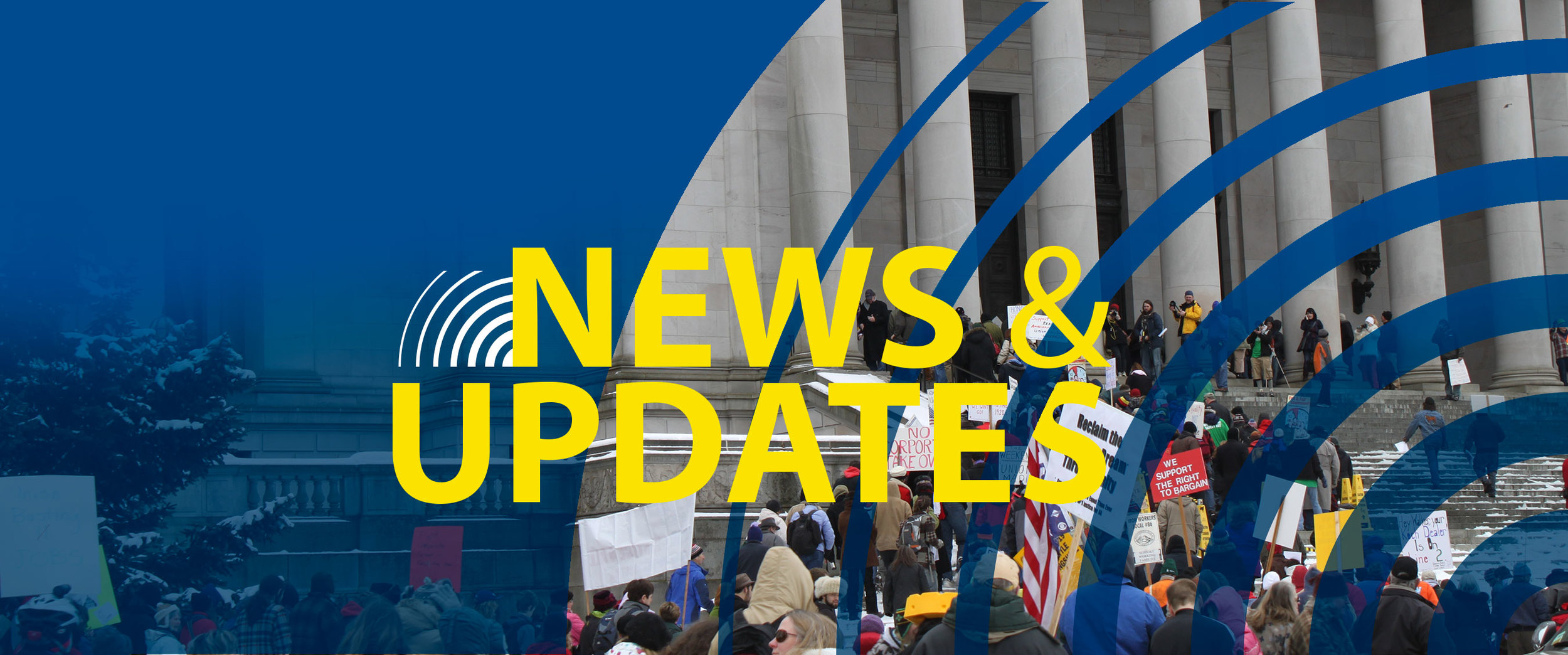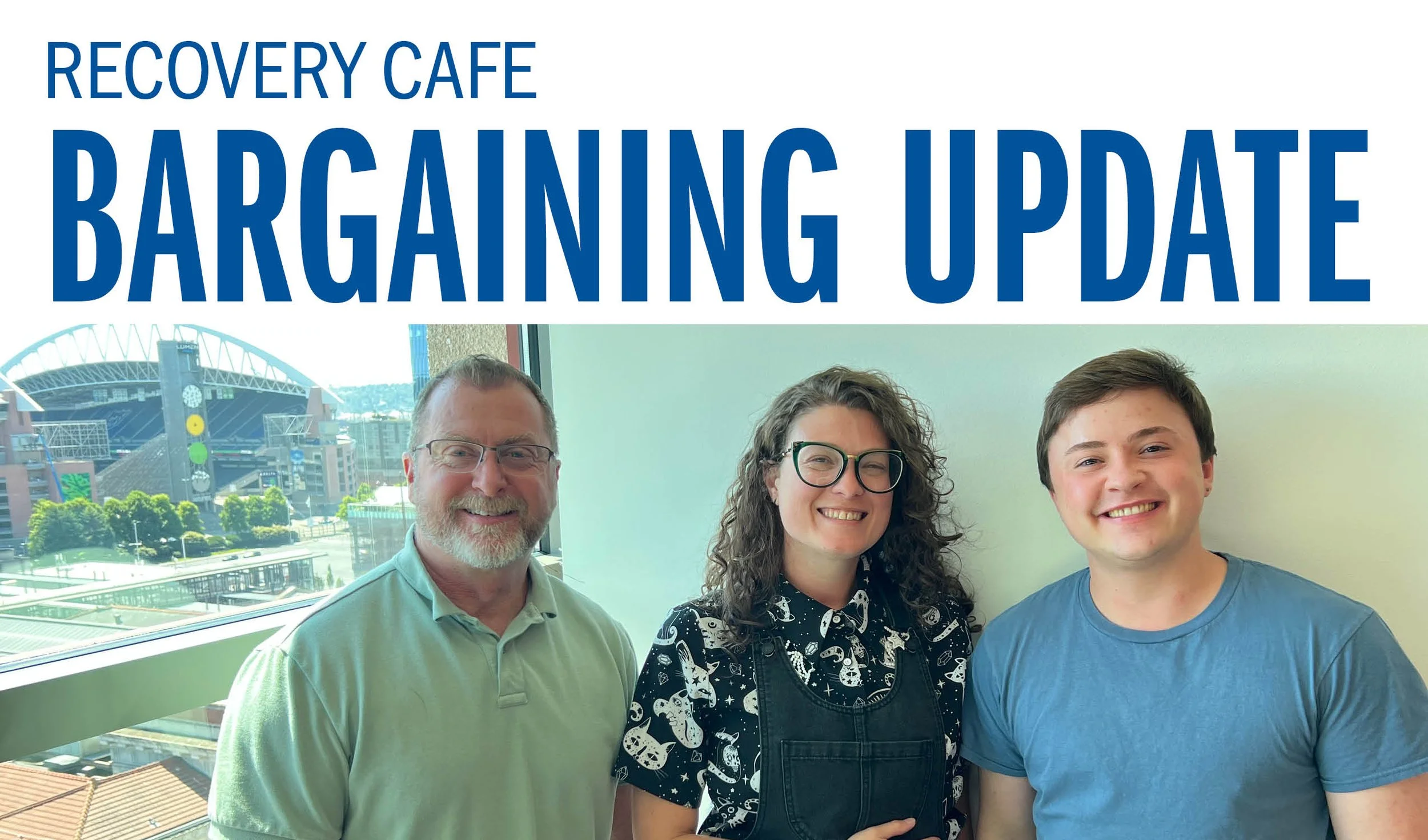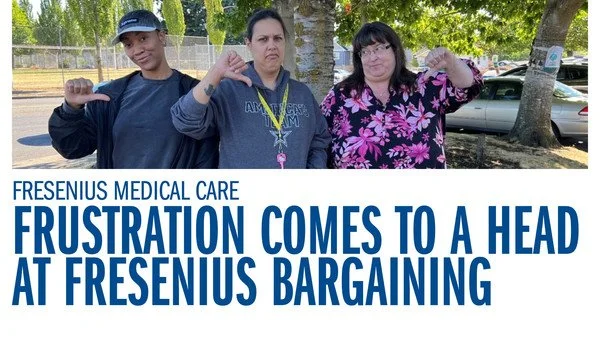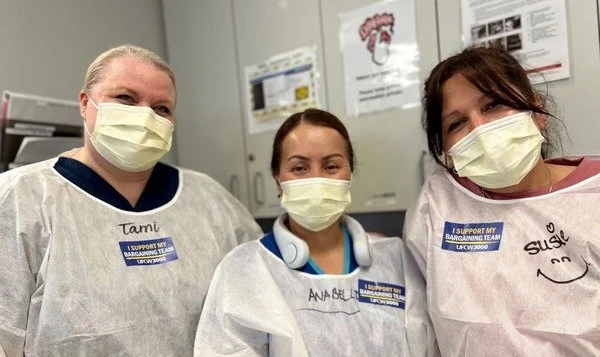On Wednesday July 23, & Thursday, July 24, our bargaining team representing the registered nurses at Providence St. Peter Hospital met with management for our ninth and tenth sessions. We began the week with cautious optimism, as management indicated they would finally respond to our proposed Staffing Article, which we first presented on April 29. After months of silence on this critical issue, we were ready to engage in meaningful dialogue.
Unfortunately, the employer's response did not meet the urgency or seriousness of the staffing concerns we've raised throughout this bargain. Rather than offering meaningful improvements or new ideas, their proposal largely repackaged existing language already in our current contract, which outlines existing committees currently operating at our hospital.
Providence's response consisted of various revisions to the existing Nurse Practice and Staffing Committee Letter of Understanding (LOU)—a committee whose operation predates the 2022 Hospital Staffing Committee legislation. Management proposed separating some current contract language related to the Unit Based Council and Professional Governance workgroups into two distinct LOUs. These changes do little—if anything—to improve what we see as the structural causes of unsafe staffing, or give us any feedback on the staffing language our team put so much hard work and critical thinking into.
The lack of direct feedback on our Staffing Article, which would provide our team with the opportunity to appropriately consider and modify our proposal to aim for actionable solutions, prompted us to request this directly when we met with management later on July 24.
A summary of our union's latest Staffing Article:
Staffing Ratios: Minimum RN-to-Patient ratios that must be maintained at all times, including during meal and rest breaks. The proposal includes flexibility to adjust the number of RN staff to exceed minimum staffing levels to account for acuity and intensity, consistent with the unit's staffing plan.
Enforcement: When ratios are not satisfied, nurses will be paid a premium of $5.00/hr for that specific shift and unit.
Float Pool: The Employer will maintain a dedicated float pool equaling 5.0% of the total RN workforce at Providence St. Peter.
Emergency Department Contingency Staffing Plan: When there are greater than 20 boarded patients in the ED, and greater than 20 patients in the ED waiting room for longer than one hour, the contingency staffing plan goes into effect. The employer will make all reasonable efforts to assign five additional RNs to patient care. This plan remains in place until both numbers fall below 20 for no less than a continuous hour.
Break Relief Nurses: The Employer will post job openings for and make reasonable efforts to hire the equivalent of 13.0 FTE Break Relief nurses within 21 days of contract ratification. Break Relief nurses will assume patient care assignments for another RN so they may take an uninterrupted meal and/or rest break. Break Relief RNs will not have a patient care assignment of their own so they can appropriately cover the assignment. Furthermore, Break Relief RNs shall only be assigned to take patients that they have the appropriate qualifications and competencies to care for.
Management's feedback on our Staffing Article suggested concerns that a few elements of our proposal—namely the minimum staffing ratios and Emergency Department Contingency Staffing Plan—might be too restrictive, implying that such standards could limit their flexibility to address staffing issues proactively, or to add nurses before the triggering conditions are met. Our team remains open to dialogue that ensures solutions are both safe and workable, and so we appreciate this dialogue. However, our stated goal is to set a standard for the minimums on safe staffing—and the capacity for management to act sooner if they see fit is written plainly in our Staffing Article's opening paragraph.
As a follow up to this discussion, we compiled a number of the studies, articles, and other resources we referenced while drafting our proposal and provided them to management in the hopes of substantiating the contents. These included Washington State Public Policy, which compares and contrasts different state hospital staffing plans; Nurse-to-patient staffing ratios from California State Law; staffing laws in effect in other nearby states; the American Nurses Association, who conclude that costs to individual hospitals can be higher when it is understaffed; and regional collective bargaining agreements which directly state minimum nurse-to-patient ratios.
We look forward to continuing the conversation with management on solutions to staffing.
"We have a duty to advocate for our patients; we feel like once again, the responses we got from management come with no immediate action, no new concepts, and overall, just fell flat."
— Julia Douglas
"Our team put a lot of work and thoughtfulness into our approach to the staffing language proposal, and what we presented to Providence takes into consideration things we can do outside of the Hospital Staffing Committee—to be proactive while scheduling nurses ahead of time, but also having a plan of action when staffing reaches critical levels; like the Emergency Department Contingency Staffing Plan. If their concern is that this mechanism might go into effect too late, we wish they would incorporate that into their counter, rather than just reject it entirely..."
— Ashley McBride
"The lack of an appropriate number of staff to care for patients on other units impacts the entire hospital—even units that aren't themselves suffering from a staffing issue, and because then RNs are being floated."
— Andy Dusablon
Contact Action Team Meeting
August 7
8:00 PM - 9:00 PM
Virtual Meeting
Meeting ID: 858 1875 0093
Passcode: 3000
In-Person Location
Washington State Labor Council Building - Olympia
3rd Floor Conference Room
906 Columbia St SW #330, Olympia, WA 98501
Front door code: 3413








































